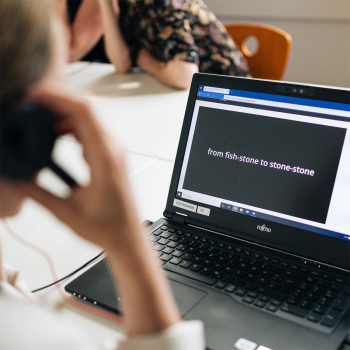
You need our eyes to see us
Poets Emelihter Kihleng and Hinemoana Baker created poems from the visual collections at the Übersee-Museum Bremen. In the public presentation of this work, they discussed how poetry can become a source of storytelling that creates emotional resonance around museum objects.
Using nature footage and performances from the poets, Radek Rudnicki created an interactive piece of the artwork.
Kihleng and Baker were digital residents in the NEO Collections project, funded by the Digital Culture Programme of the Kulturstiftung des Bundes (German Federal Cultural Foundation)..
This story relates to the topics NEO Collections, . Discover more content on these topics by clicking one of the tags!